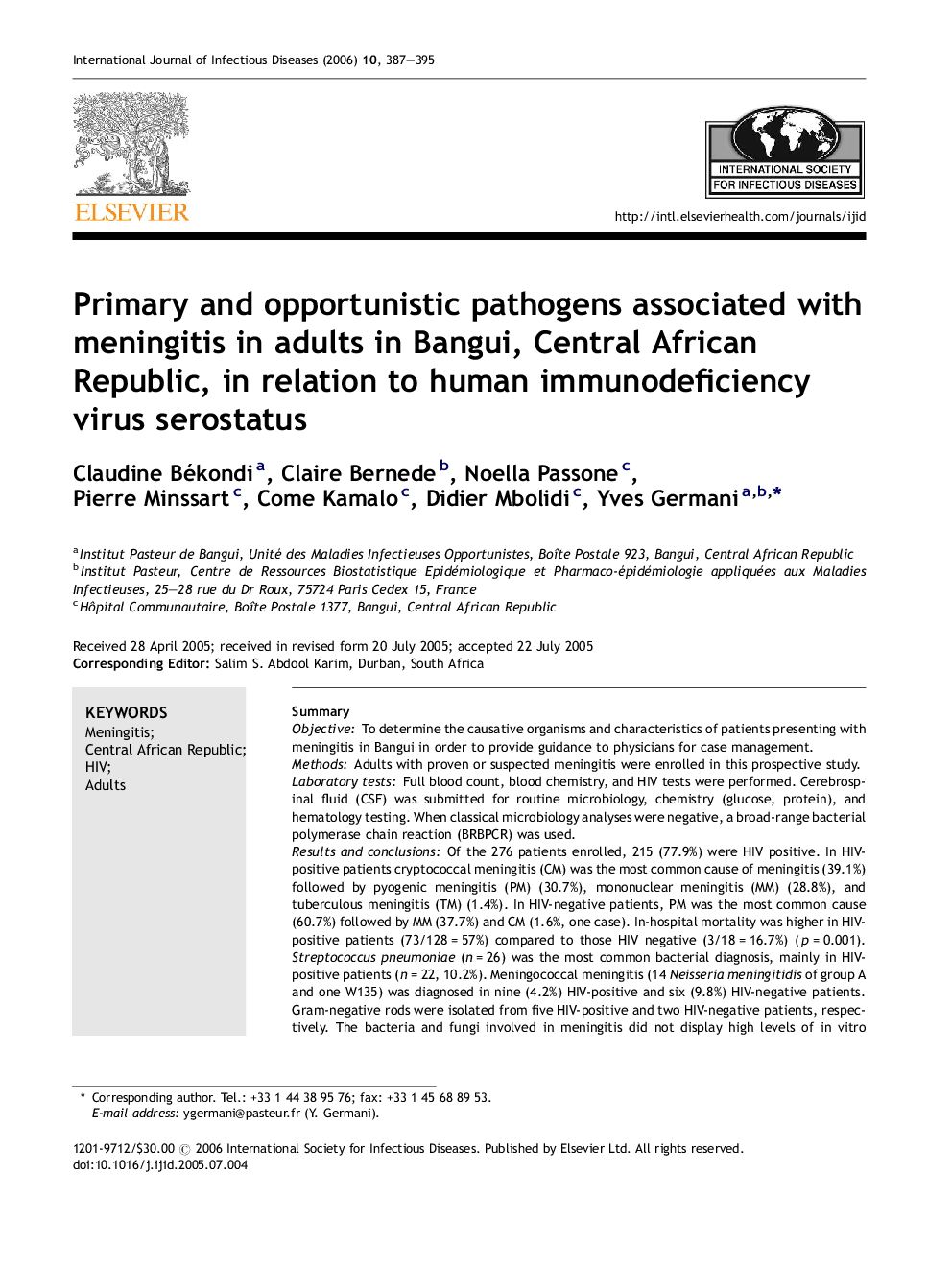| Article ID | Journal | Published Year | Pages | File Type |
|---|---|---|---|---|
| 3365234 | International Journal of Infectious Diseases | 2006 | 9 Pages |
SummaryObjectiveTo determine the causative organisms and characteristics of patients presenting with meningitis in Bangui in order to provide guidance to physicians for case management.MethodsAdults with proven or suspected meningitis were enrolled in this prospective study.Laboratory testsFull blood count, blood chemistry, and HIV tests were performed. Cerebrospinal fluid (CSF) was submitted for routine microbiology, chemistry (glucose, protein), and hematology testing. When classical microbiology analyses were negative, a broad-range bacterial polymerase chain reaction (BRBPCR) was used.Results and conclusionsOf the 276 patients enrolled, 215 (77.9%) were HIV positive. In HIV-positive patients cryptococcal meningitis (CM) was the most common cause of meningitis (39.1%) followed by pyogenic meningitis (PM) (30.7%), mononuclear meningitis (MM) (28.8%), and tuberculous meningitis (TM) (1.4%). In HIV-negative patients, PM was the most common cause (60.7%) followed by MM (37.7%) and CM (1.6%, one case). In-hospital mortality was higher in HIV-positive patients (73/128 = 57%) compared to those HIV negative (3/18 = 16.7%) (p = 0.001). Streptococcus pneumoniae (n = 26) was the most common bacterial diagnosis, mainly in HIV-positive patients (n = 22, 10.2%). Meningococcal meningitis (14 Neisseria meningitidis of group A and one W135) was diagnosed in nine (4.2%) HIV-positive and six (9.8%) HIV-negative patients. Gram-negative rods were isolated from five HIV-positive and two HIV-negative patients, respectively. The bacteria and fungi involved in meningitis did not display high levels of in vitro resistance. Conventional microbiology techniques failed to detect the causative agent in 55 (53.4%) PM cases. Broad-range bacterial PCR detected DNA from S. pneumoniae in three samples, N. meningitidis in two, Escherichia coli in one, Listeria monocytogenes in two and Staphylococcus aureus in one sample. In the CSF of five (three HIV negative and two HIV positive), PCR products were not identified with the oligonucleotide probes specific for the usual species of bacteria found in CSF, or genera commonly considered potential contaminants of clinical samples. Among the MM cases, 77 (90.5%) probable viral meningitis (54 HIV positive and 23 HIV negative) and eight TM (HIV positive) were suspected.
